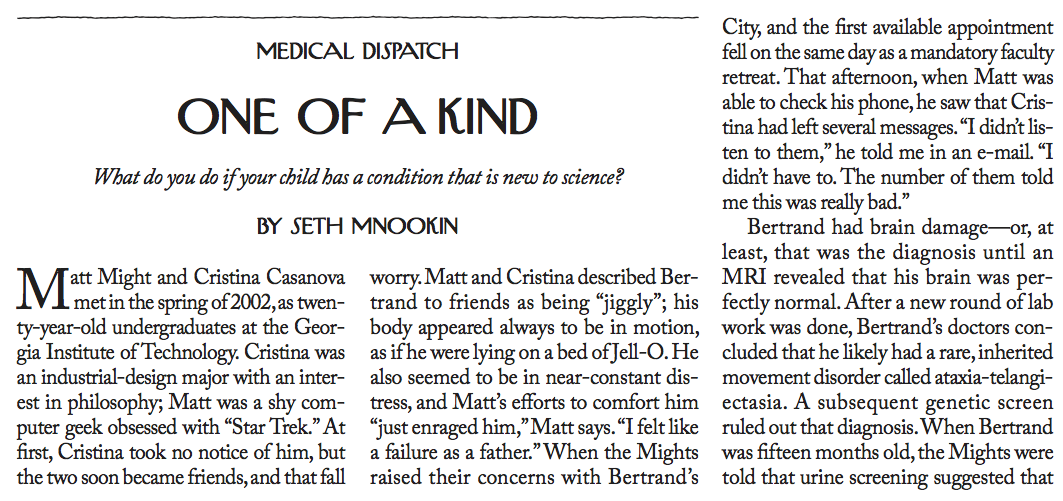Eric Topol's new book, The Patient Will See You Now, is an excellent read on the future of medicine and the era of engaged patients.
The NGLY1 community has since its inception been a model of how it's possible to push the science forward with engaged patients and technology.
It is a great pleasure to see the NGLY1 community (and NGLY1 Dad Matt Wilsey of the Grace Wilsey Foundation) cited in a few pages as a example of an engaged patient community.
Topol cites the NGLY1 community's efforts at patient-finding over the internet, as well as harnessing "individuals outside the box" in medicine.
NGLY1 researcher Gregory Enns (Stanford) comments, "This represents a complete change in the way we're going about clinical medicine."
The NGLY1 Community may be small, but it is united and it is committed.
Working together, we can make a difference.
We will make a difference.







